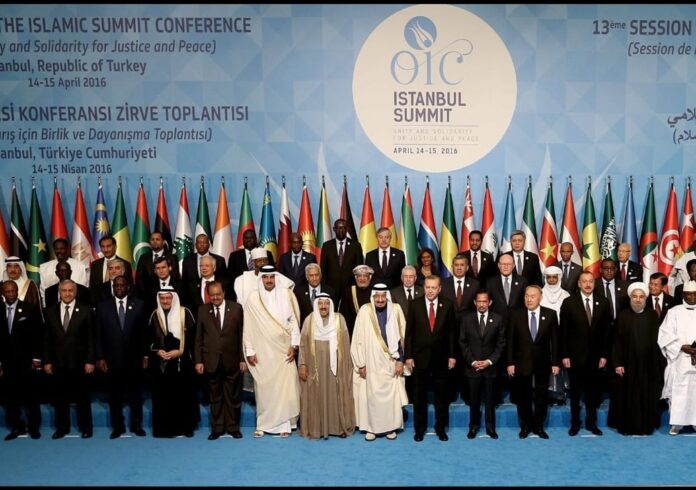The Organization of Islamic Cooperation (OIC) consists of 57 member states, which collectively encompass a diverse range of population sizes, levels of economic development, and resource endowments. As of 2021, the OIC member states are home to approximately 1.9 billion people, making it one of the largest international organizations in terms of population.
In terms of resources, the OIC member states possess a wide array of natural resources. These resources vary from country to country and may include oil, natural gas, minerals, agricultural land, and other valuable commodities. Some member states, such as Saudi Arabia, Iran, and Somalia, possess significant oil and gas reserves, while others have notable mineral deposits or agricultural capabilities.
The distribution and abundance of resources among OIC member states are not uniform. Some countries are richly endowed with resources and have substantial wealth and economic opportunities, while others face resource constraints and development challenges.
It is likely that the GDP of the Organization of Islamic Cooperation (OIC) as a whole is $22 trillion dollars. The OIC consists of 57 member states, each with its own economy and GDP. To put it into perspective, the GDP of the entire world in 2020 was approximately $83.84 trillion, according to the International Monetary Fund (IMF).
It is probable that the OIC, which constitutes a subset of the global economy and includes both developed and developing countries, would have a GDP that is significantly higher than other subset groups. It is suggested that the OIC countries combined with GDP of 22 trillion is force to reckon with: (In this case, to find the percentage of $22 trillion within the total global GDP of $83 trillion, you would calculate like this:
(22 trillion / 83 trillion) * 100 = approximately 26.51%
So, $22 trillion represents approximately 26.51% of the total global GDP.)
However, it is important to note that the GDP of the member countries within the Organization of Islamic Cooperation (OIC) can vary significantly. Here is an estimation of the GDP of some selected OIC member countries based on their nominal GDP (in U.S. dollars) as of 2021:
1. Saudi Arabia: $1.97 trillion
2. Turkey: $850 billion
3. Iran: $589 billion
4. United Arab Emirates: $428 billion
5. Indonesia: $1.07 trillion
6. Malaysia: $366 billion
7. Egypt: $366 billion
8. Pakistan: $276 billion
9. Bangladesh: $364 billion
10. Nigeria: $442 billion
These estimations are subject to change as economic conditions fluctuate. Additionally, this is not an exhaustive list, as the OIC consists of 57 member states, each with its own GDP.
Upon closer examination of factors such as population, economy, and resources, the combined countries of the Organization of Islamic Cooperation (OIC) emerge as a significant force in the global market. Their collective strengths make them a noteworthy presence on the world stage.
To state the facts plainly, Europe stands as the most sophisticated subset group with integrated economies and the common currency, the Euro. This unity has established them as a formidable force in the global market.
Let’s compare the European Union (EU) and the Organization of Islamic Cooperation (OIC) in terms of population, resources, and economy:
1. Population:
– EU: The EU has a population of approximately 446 million people (as of 2021). It includes 27 member states, with countries like Germany, France, and Italy having large populations.
– OIC: The OIC consists of 57 member states and has a combined population of around 1.9 billion people (as of 2021). This makes the OIC significantly larger in terms of population compared to the EU.
2. Resources:
– EU: The EU member states have various natural resources. Some countries, such as Germany and France, have diverse industrial sectors, while others, like the UK, have significant oil and gas reserves in the North Sea.
– OIC: The OIC member states possess a wide range of resources. Some, such as Saudi Arabia, Iran, and the UAE, have extensive reserves of oil and natural gas. Other member countries, like Indonesia, possess abundant agricultural land and resources.
3. Economy:
– EU: The EU has a highly developed and integrated economy. It is one of the largest economies globally, with a combined Gross Domestic Product (GDP) exceeding $15 trillion (as of 2020). Countries like Germany, France, and the UK have some of the largest economies within the EU.
– OIC: The OIC member states collectively contribute to the global economy. However, the economic development levels and GDP of OIC member countries differ significantly. Some member countries, like Saudi Arabia and Qatar, have high GDP per capita due to their oil wealth, while others struggle with lower levels of economic development.
In conclusion, while the EU has a smaller population, it boasts a highly integrated and developed economy. On the other hand, the OIC has a much larger population and possesses a wide range of natural resources among its member states.
Undoubtedly, the Organization of Islamic Cooperation (OIC) has the potential to become a rising power in the near future considering its population, resources, and economy. Despite the challenges that some countries within the OIC currently face, their collective strengths and capabilities suggest a promising trajectory for the organization. The End.
Mohamed Mohamoud Adde is an academic and a political Analyst specialising in offering expert analysis, insight and recommendations on Political developments.
(His goal is to aid stakeholders in making informed decisions and comprehending the complex dynamics of political systems.)


